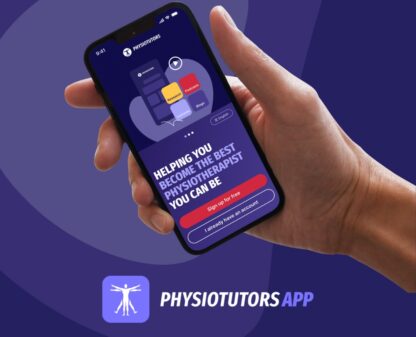Patellofemoral Pain Syndrome

Body Chart

- Pain behind or around the patella radiating to the entire knee
Background Information
Patient Profile
- Female > male or female = male
- 15-25 years old
- No trauma in history
Pathophysiology
Mechanical nociceptive pain with partial inflammatory component in the acute stage. No definitive cause. Irritation due to multiple mechanical factors, causing continuous patellofemoral stress. Increased patellofemoral stress can cause microtrauma in cartilage surfaces leading to degeneration. Damage to cartilage is no direct sign of PFPS though. In the history there is usually a spike in activity/load.
Course
Lengthy course. 60% of patients with patellofemoral pain syndrome have symptoms at a 1 year follow-up and 40% at a 6 year follow-up.
History & Physical Examination
History
Usually short history – patients tend to ignore early symptoms and avoid consulting a healthcare professional. Therapy starts immediately after seeing the PCP. Some patients report a trauma (patella fracture, ACL surgery, ligament lesions). Usually there is no trauma. Patients exercise regularly.
- Local
- Diffuse
- Intense
- Deep aching
- Feeling of instability/giving way
Physical Examination
Inspection
Misalignment: Poor foot and/or knee axis, leg-length difference, side-by-side difference in quadriceps development
Functional Assessment
Squatting; sitting on heels; step-up
Active Examination
Possible weakness of quadriceps, hip abductor and external rotator weakness
Passive Examination
Possible PROM limitations of the patella; possible contraction of m. gastrocnemius, limited hip ROM and lumbar spine mobility
Differential Diagnosis
- Knee joint arthritis
- Ligament lesion
- Meniscus damage
- Osteophytes
- Referred pain from hip or lumbar spine
Treatment
Strategy
Patient education, passive symptom modification, active exercises for hip and knee muscles
Interventions
Passive: Tape, NSAIDs help in the acute stage, Patient education, Insoles
Active: Address biomechanics of the lower limb, strengthening of quadriceps, hip abductor strengthening, stretching hamstrings/gastrocnemius, gait training
References
- Boling, M., et al., Gender differences in the incidence and prevalence of patellofemoral pain syndrome. Scand J Med Sci Sports, 2010. 20(5): p. 725-30.
- Heintjes, E., et al., Pharmacotherapy for patellofemoral pain syndrome. Cochrane Database Syst Rev, 2004(3): p. CD003470.
- Peterson, W., Das femoropatellare Schmerzsyndrom, in Orthopädische Praxis, A. Ellermann, Editor. 2010, Medizinisch Literarische Verlagsgesellschaft MBH: Uelzen.
- Piva, S.R., et al., Predictors of pain and function outcome after rehabilitation in patients with patellofemoral pain syndrome. J Rehabil Med, 2009. 41(8): p. 604-12.
- Grelsamer, R.P. and J.R. Klein, The biomechanics of the patellofemoral joint. J Orthop Sports Phys Ther, 1998. 28(5): p. 286-98.
- Clijsen, R., J. Fuchs, and J. Taeymans, Effectiveness of Exercise Therapy in Treatment of Patients With Patellofemoral Pain Syndrome: A Systematic Review and Meta-Analysis. Phys Ther, 2014.
- Klipstein, A. and A. Bodnar, [Femoropatellar pain syndrome—conservative therapeutic possibilities]. Ther Umsch, 1996. 53(10): p. 745-51.
- Crossley, K., et al., Patellar taping: is clinical success supported by scientific evidence? Man Ther, 2000. 5(3): p. 142-50.
- Rixe, J.A., et al., A review of the management of patellofemoral pain syndrome. Phys Sportsmed, 2013. 41(3): p. 19-28.
- Böhni, U., Seiten aus dem Handbuch Manuelle Medizin. S.12-15, Theorie des Reizsummenprinzip am WDR-Neuron (Ikeda 2003, Sandkühler 2003). 28.10.2011,Thieme Verlag.


